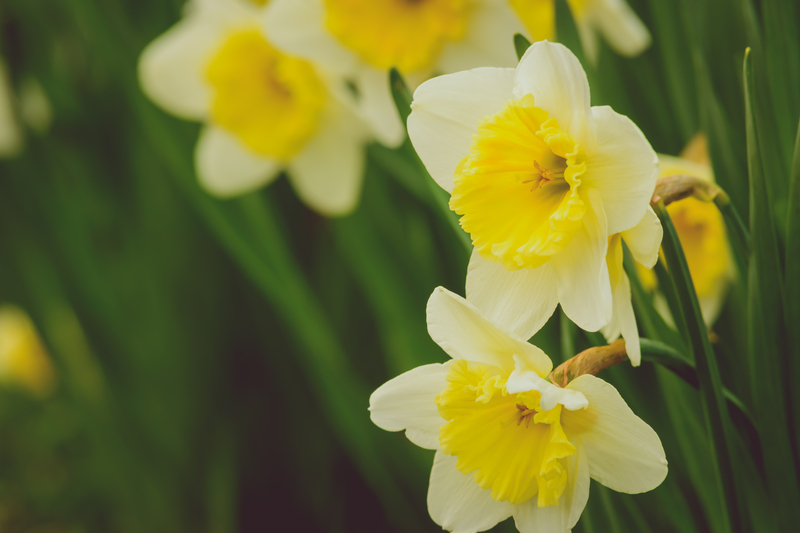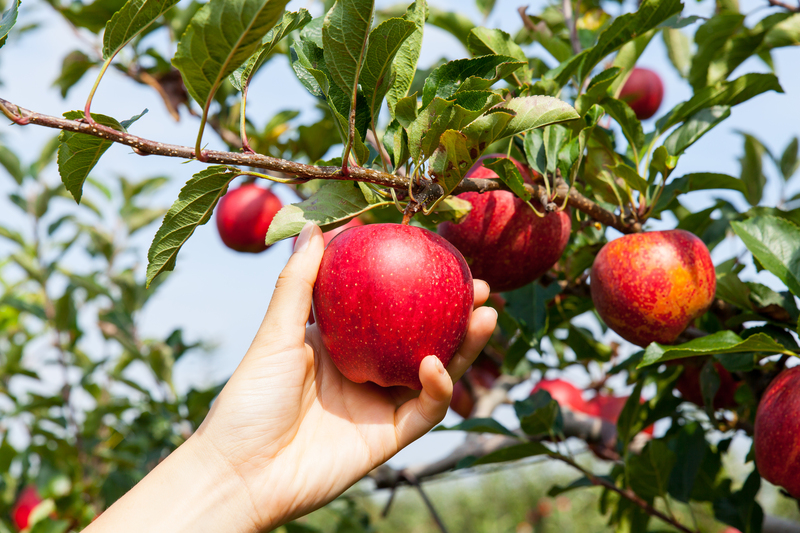Efficient garden planning on a budget
Posted on 26/08/2025
Efficient Garden Planning on a Budget: Grow More for Less
Dreaming of a lush, thriving garden but worried about high costs? The good news is, with efficient garden planning on a budget, you can create a beautiful, bountiful outdoor space without breaking the bank. This guide covers practical strategies, creative tips, and proven methods to help you maximize your garden's potential while minimizing expenses. Whether you're a beginner or a seasoned gardener, these ideas will help you cultivate your dream garden, keep costs down, and have fun along the way.

Why Efficient Garden Planning Matters--Especially on a Budget
Garden planning sets the foundation for everything you grow. An organized approach leads to efficient use of resources, better yields, and a healthier landscape. Budget-friendly garden planning ensures you're not wasting money on unnecessary tools, materials, or plants that might underperform.
- Reduces unnecessary spending by focusing on essentials
- Maximizes your available space for higher productivity
- Promotes sustainability with resourceful techniques
Let's explore step-by-step how to achieve the most cost-effective garden planning--whether your plot is large or small, urban or rural.
Step 1: Assess Your Garden Space and Set Priorities
Start with a Garden Audit
Before spending a cent, take a close look at your available space:
- Measure your plot's dimensions
- Note sunlight, shade, and existing features
- Assess soil quality and drainage
Sketch a simple map of your garden. This visual will help you allocate space efficiently as you plan.
Decide What Matters Most
When you're gardening on a budget, focus is key. Pinpoint your main goals:
- Fresh vegetables?
- Colorful flowers?
- Low-maintenance landscaping?
List your top priorities. You can always expand later, but starting small will help you avoid overspending.
Step 2: Grow What You'll Use (and What Grows Well)
Pick Plants Wisely
Avoid the temptation to buy expensive or exotic varieties that may not thrive in your climate. Research the best-performing, budget garden plants for your region:
- Visit local extension offices or ask neighbors for recommendations
- Choose low-maintenance perennials for flowers and landscaping
- Grow high-yield, easy-to-grow vegetables (like lettuce, beans, or tomatoes)
Focus on plants that serve your needs and grow well where you live to avoid costly disappointments.
Seeds Over Starts: Save Big
One of the biggest money-savers in frugal garden planning is starting your plants from seed:
- Seed packets cost a fraction of nursery starts
- You'll often get dozens more plants per package
- Many seeds can be direct-sown, requiring less equipment
Start seeds indoors using recycled containers (egg cartons, yogurt cups) to save even more. For perennials, look for seed swaps or bartering groups online.
Step 3: Optimize Your Soil (For Free or Cheap)
Composting: Black Gold for Your Budget Garden
Good soil is the backbone of a thriving garden - but fertilizers can be expensive. Make your own organic fertilizer for free by composting:
- Collect kitchen scraps (vegetable peels, coffee grounds, eggshells)
- Layer with yard waste (leaves, grass clippings, plant prunings)
- Turn and water periodically to speed decomposition
Composting reduces waste and improves your soil naturally, saving you money each season.
Mulching: Reduce Weeds, Retain Water
Mulching suppresses weeds and retains moisture, but commercial mulches can add up in cost. Try budget options:
- Use shredded leaves, grass clippings, or cardboard
- Ask local landscapers or tree care companies about free wood chips
- Repurpose newspaper (just avoid glossy pages)
Efficient garden planning includes making the most of local resources--often for free.
Step 4: Repurpose, Reuse, and Salvage
DIY Garden Solutions
Who says you need new, pricey supplies? Creative reuse is key for budget garden planning:
- Turn old pallets into raised beds or vertical planters
- Transform containers (buckets, barrels, tires) into planters
- Reuse bricks, stones, or broken tiles for edging or paths
Scour local "free" listings, flea markets, and yard sales for potential garden tools and decor - you'll be amazed at what's available!
Rainwater Harvesting
Water is one of the biggest costs in many gardens. Reduce your bill by collecting rainwater:
- Set up a rain barrel beneath downspouts
- Reuse old barrels or large tubs as collection points
- Water plants in the early morning to minimize evaporation
Many municipalities offer rebates or discounts for water-saving efforts. Check with your council for possible savings!
Step 5: Efficient Layout & Companion Planting
Plan Your Plant Placement
Strategic layout saves space, boosts yields, and reduces costs. Consider:
- Raised beds: Higher productivity in smaller spaces
- Vertical gardening: Grow up, not out, with trellises or vertical frames
- Intensive planting: Close spacing suppresses weeds and maximizes harvests
Companion Planting
Pair plants that support each other to save money on chemicals and fertilizers:
- Basil repels pests from tomatoes and peppers
- Marigolds deter nematodes and beetles
- Beans "fix" nitrogen, enriching the soil for nearby crops
Smart pairing means healthier plants and a more efficient garden overall.
Step 6: Smart Purchasing & Timing
Know When to Shop
Gardening materials often go on clearance at the end of the season. Plan ahead by:
- Buying tools, pots, and seeds during late summer or fall sales
- Stocking up on discounted soil and amendments in the off-season
- Keeping an eye out for neighborhood plant swaps
Buy in Bulk (and Share)
Some items--like mulch, soil, or seeds--are much cheaper by the bag or bulk. Split costs with neighbors or garden clubs to save even more.
Step 7: Maintenance--Work Smarter, Not Harder
Prevent, Don't React
Catching issues early prevents expensive problems. Develop a quick garden routine:
- Check soil moisture regularly to avoid over- or under-watering
- Inspect for pests and diseases weekly
- Weed a little, often--prevents them setting seed or spreading
A little consistent work is far more efficient and cost-effective than big fixes later on.
Extra Budget Garden Planning Tips
- Start small: Expand as you gain confidence and see results. This cuts costs and prevents overwhelm.
- Join a community garden: Share tools, seeds, and knowledge for less.
- Save your own seeds: Collect seeds from successful plants each year. Over time, this saves a fortune.
- Leverage local "green" programs: Many municipalities offer free compost, mulch, or free native plants--check your city's website!
- Educate yourself: Use free online resources, YouTube, and local library books to learn best practices and troubleshoot.
The Best Plants for a Budget Garden
Here are some economical plants that suit almost every efficient budget garden design:
- Leafy greens: Lettuce, spinach, kale--fast-growing and productive
- Root crops: Radishes, carrots, beets--sow directly for best value
- Herbs: Basil, parsley, chives--fresh flavor at your fingertips
- Native flowers: Coneflower, black-eyed Susan, coreopsis--thrives with less care
- Marigolds and nasturtiums: Both repel pests, easy to grow from seed
These options provide beauty, nutrition, and pest resistance while keeping your costs low.

Common Pitfalls in Frugal Garden Planning (and How to Avoid Them)
- Buying more than you need: Stick to your plan and resist impulse buys.
- Neglecting soil health: Cheap garden soil can mean poor results. Invest time in composting and amendments.
- Ignoring plant spacing: Overcrowded plants compete for resources, resulting in stunted growth.
- Underestimating maintenance: Plan for tasks you can maintain regularly, not just on weekends.
Conclusion: Achieving Efficient Garden Planning on a Budget
Efficient garden planning on a budget is about creativity, resourcefulness, and smart choices. You don't need to spend a fortune to enjoy a productive, beautiful garden. By prioritizing your needs, focusing on what thrives locally, and using sustainable practices, you'll save money--and reap rich rewards season after season.
- Start small, think smart, and grow with what you have
- Use every resource at your disposal and repurpose when possible
- Enjoy the journey--garden planning is just as rewarding as the harvest!
For more guides on budget-friendly gardening, eco-friendly landscaping, or compact garden designs, explore our additional articles or subscribe for updates. Happy gardening on a budget!

